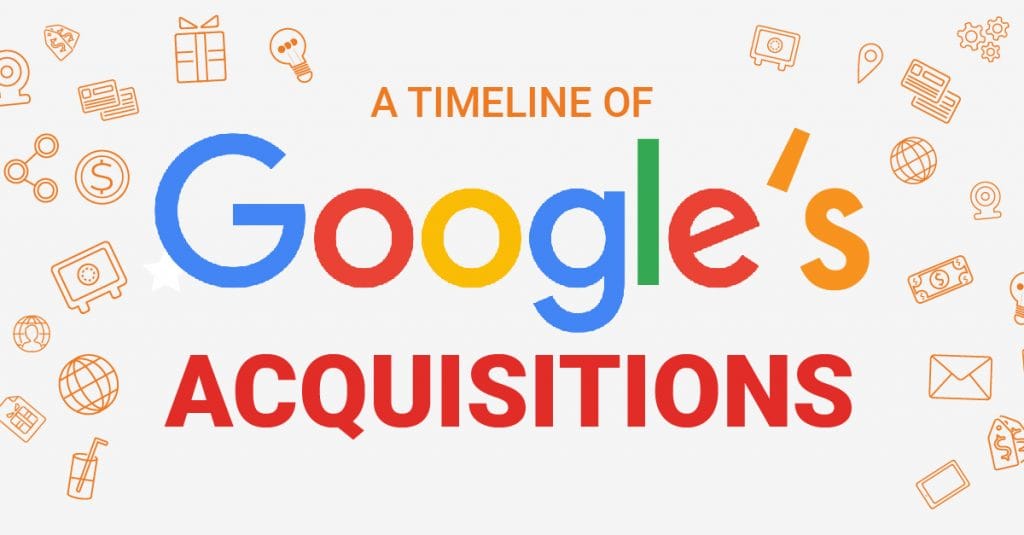Digital Marketing
Explore our library of digital marketing articles and discover the digital marketing tips you need to boost your digital visibility.
Learn How to Properly Optimize Your Facebook Ads Strategy
If you’re running any kind of ad campaign on Facebook or Instagram, you could be spending way more money than you need to. Before you start running any new campaigns, take a few minutes to read through this to make sure your ads are as optimized as possible. Are your ad conversions where they should…
The Complete Guide to Image Optimization for the Web
Images are a vital part of the user experience, but they also account for the most data on your page. This means it can have a dramatic effect on your site’s loading time, which we know can impact conversion rates. Research shows 47% of users expect a website to load within two seconds or less,…
Mastering the Use of Device Specific PPC Campaigns
People use different devices for different tasks. Would you go app shopping for new apps on your tablet or smartphone from your desktop? Probably not. Would you try out a new business program on your tablet? Probably not. So, it makes sense to use device-specific PPC campaigns when your business is targeting behaviors that are…
Conversion Rate Optimization: Tips and Tricks You Need to Know
You’ve built (or paid for) a stellar website. You’ve invested in market research and built an amazing product, and you’ve got a great sales and customer support team to support it. But, people just aren’t responding the way you’d hoped. They’re either not coming to begin with, or even worse, they’re coming, taking a look…
How to Choose the Best Font Selection for Messaging in Marketing
I’ve already written a post on the importance of considering color theory in your branding, so today I want to extend that and talk about choosing your fonts. Just like color, fonts can evoke certain thoughts and feelings, so it’s important to make sure your fonts match your brand message. Today’s marketers are saddled with…
How to Protect Your Blog from Copyright Infringement
In today’s society, new content is produced at an alarming rate – and with everything just a search away, it’s super easy to find (and steal) whatever you want. If you’re worried about someone stealing your blog content for use as their own, there are some things you can do to protect yourself. Run…
Micro Conversions vs. Macro Conversions: Why You Need Both
There’s a tremendous amount of data out there for marketers. According to the IDC, we generated 1.8 zettabytes (1.8 trillion GBs) of information in 2011. In 2012, we added another zettabyte. And by 2020, we’re expected to hit 40 zettabytes. With all of it to sort through, it can be difficult to determine what metrics…
10 Tips to Crafting a Landing Page Design That Converts
Landing pages are an important part of the sales funnel – they’re where you direct your visitors when you want them to do something – whether it’s sign up for your email list, or buy your new product. You’ll likely have several landing pages to build over the course of your career, since each landing…
Breaking Down and Optimizing Your Business Marketing Budget
No matter what kind of business you’re running, it’s essential that you have a marketing strategy that’s expansive, practical and effective. Small business owners have some tough decisions to make here. If they’re new to the world of digital media marketing, creating a marketing strategy from scratch can be an intimidating task. With so many…
The Beginner’s Guide to Successful Remarketing
When you browse the Internet, have you ever noticed that certain companies seem to be following you around? You visit one website, and then all the sudden, you start seeing ads for them on Facebook, and start seeing suggestions to like their page in your feed? As creepy as it may be, it’s intentional, and…
Color Theory and Web Design: What You Need to Know for Marketing
Color plays an important role in marketing. Discover the power of effective color theory and web design for your digital marketing. Color is an important aspect of web design, because it can make or break even the most well laid out websites. Color has the power to evoke emotion, which has a tremendous influence on…
4 Step Design to Master Your Businesses’ Sales Funnel
The sales funnel is a necessary part of any business venture – online or off. You have to know the path you’re going to take customers on from start to finish, so you can build the steps and process to get them there; and so you can know where any customer or lead is at…
Explaining Newsjacking and How to Use it For Your Branded Content
Breaking news happens all the time – just not always in your industry. But, when it happens in your industry, you don’t have to be the first to break it to get benefit from it. Anything that happens in an industry remotely related to your business can be used to your advantage – either through…
PPC Beyond Google AdWords: Worth the Investment?
When it comes to pay per click (PPC) advertising, the first thing most marketers think of is Google AdWords. And that’s okay, because it works. And it works well, if you know how to optimize the campaign to get the best possible result. (See my post about keyword tiering if you’re looking for a new…
The Psychology of Calls to Action
Every piece of content you write is aimed at getting readers… but having people read your content isn’t enough to sustain your business. To get that content earning revenue means your content must entice readers to take action. You no doubt know how important the call to action (CTA) is, but not all CTAs are…
A Complete and Comprehensive Guide to YouTube Advertising
YouTube is no doubt one of the largest search engines – just right behind Google, which makes sense because Google owns it. With more than a billion users on the platform, there’s a wealth of marketing opportunity out there. And, since it blends seamlessly with Google AdWords, it’s easy to manage from within the platform….
Is it Time to Rethink Your Display Advertising Campaigns?
Do you know how many websites your company is advertising on every month? Do you know how much you’re spending on those display ads? What if I told you that you could dramatically decrease the number of websites displaying your ads, without seeing a decrease in results? That’s exactly what JP Morgan Chase has recently…
9 SEO Mistakes That Will Ruin Your Content Marketing Strategy
9 SEO Mistakes That Will Ruin Your Content Marketing Strategy: Common SEO mistakes detrimental to content marketing include neglecting keyword research, ignoring mobile optimization, and overlooking meta tags and descriptions. Duplicate content, slow website speed, and not optimizing for user experience harm rankings. Neglecting local SEO, backlink quality, and disregarding analytics insights can also significantly…
156 Digital Marketing Statistics You Must Know for Success
Digital marketing statistics guide your strategy, offering insights into consumer behavior and market trends. They help tailor your efforts for maximum engagement, ensuring resources are efficiently allocated. By understanding these metrics, businesses can create targeted campaigns, optimize their online presence, and stay ahead of the competition. Essentially, they empower decision-making with data-driven clarity, enhancing the…
How to Start a YouTube Channel for Your Business
YouTube, the Google-owned video network, is about more than funny videos and attempting to improve SEO signals. The network is a great way to connect to and engage with people in your audience, since it has more than a billion users. That’s more than 33% of everyone on the entire internet. Every day, people are…
A Timeline of All of Google’s Acquisitions Since 2001
Google’s acquisition timeline since 2001 features key purchases like Android in 2005, pivotal in mobile OS; YouTube in 2006, expanding into video sharing; and DoubleClick in 2007, enhancing online advertising. The acquisitions demonstrate Google’s strategy to expand its services, invest in new technologies, and strengthen its position as a tech giant. Google got its start…
Everything You Need to Know to Start Your Own Podcast
Podcasting is a type of online audio broadcasting. You record an audio file, usually MP3, then upload it online for people to stream and listen to. Alternatively, people can download the file and listen at their own convenience. The term “podcast” is a hybrid of iPod and broadcasting, since most people listened to the files…
How to Make User Generated Content Work for You
User generated content, or UGC, refers to any kind of content created by users of a product or service. Most people think of reviews when it comes to UGC, but it encompasses everything from photos, blogs, videos, audio, tweets, forum posts, and more. You can use this content on your social media channels to promote…
16 of the Best Tips and Tricks to Hack Your Business Growth
Growth hacking is a different approach to marketing. It focuses on scalability. As your marketing efforts are designed to bring in more customers to grow your business, you can continue to put more into marketing while serving the growing customer base. Instead of traditional marketing, it focuses on using a series of shortcuts to drive…
Native Advertising: Why It Works And Why You Should Do it Now
Native advertising is paid content that’s made to match the look and feel of the website it’s presented on, so it looks more like organic content. It encompasses many content formats, ranging from articles to infographics and videos. This type of content appears to provide value to the audience, but the end goal to sell…


































